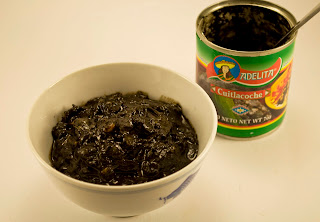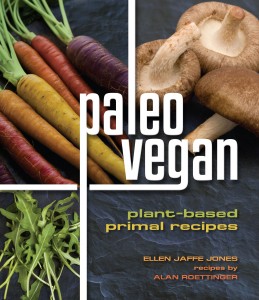Huitlacoche (also called cuitlacoche) is “corn smut,” an inky-black fungus that infects and grows on ears of corn. It’s pretty disgusting-looking, which explains why consumption of this delicacy never took off in the United States, even after James Beard elegantly renamed it “Mexican truffle.” In Aztec times, it was purposely cultivated (the name comes from nahuatl, the Aztec language), and it’s still highly regarded in Mexican cuisine. Usually, huitlacoche is served in creamy, cheesy dishes–the perfect foil for its rich mushroom-like flavor. Although nowhere near as full-flavored as fresh, canned huitlacoche can be found in Mexican markets and some specialty shops. I always grab a can or two whenever I find it.
I used to enjoy it in quesadillas and in “crepas de huitlacoche,” a creamy crepe specialty at some high-end restaurants in Mexico City. So since I stopped eating dairy products, I realized there would be a challenge for me to develop a recipe that takes advantage of huitlacoche’s flavor, color and odd textures. Then I had the idea to create a creamy soup based on the classic potato-leek combination, with white corn added.
First I warmed a little olive oil in a pot and added finely sliced onion and leek. I covered the pot and turned the heat down low to let the vegetables sweat for about 10 minutes. Then I added sliced russet potato, white corn kernels, water and vegetable bouillon, and simmered the mixture until everything was quite tender. I pureed it in a blender, strained it back into the pot and reheated it.
To serve, I ladled the soup into bowls, placed a dollop of the huitlacoche in the center, and swirled it with the back of a small spoon. Then I added another gob, a generous squeeze of lime juice, and a garnish of chopped cilantro. Yum! Even my wife, who is not pre-disposed to like unusual Mexican foods the way I am, loved it.
If I had had any fresh epazote (an herb used in Mexican cuisine with a very unique taste), I would have added it to the huitlacoche to boost its unusual flavor profile. All in all, this was a good alternative to the cheese and cream-based dishes with which I was familiar. Next time I think I’ll add a few cloves of garlic at the beginning (and try to score some fresh epazote!).








